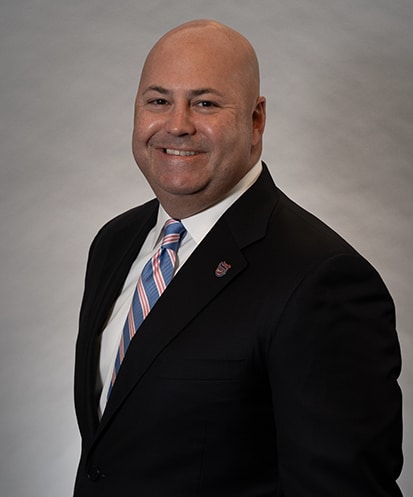Amniotic Fluid Embolism Is a Catastrophic Complication
 Amniotic fluid embolism is a sudden, unforeseeable, unpreventable, and alarming complication of pregnancy. It occurs when a large amount of amniotic fluid abnormally enters the mother’s bloodstream during labor or immediately before or after delivery, resulting in severe damage and, at times, even the mother’s death.
Amniotic fluid embolism is a sudden, unforeseeable, unpreventable, and alarming complication of pregnancy. It occurs when a large amount of amniotic fluid abnormally enters the mother’s bloodstream during labor or immediately before or after delivery, resulting in severe damage and, at times, even the mother’s death.
What is amniotic fluid embolism?
Amniotic fluid embolism (AFE) is a rare (occurring in about one in 40,000 deliveries) but severe obstetric emergency that can happen during childbirth, or immediately before or after delivery. It occurs when amniotic fluid, fetal cells, hair, or other debris enters the bloodstream of the mother, triggering an allergic-like reaction in her body. AFE can lead to the sudden onset of life-threatening symptoms, including shortness of breath, rapid heart rate, sudden drop in blood pressure, and cardiac arrest.
The exact cause of amniotic fluid embolism is not fully understood. However, it’s believed to occur when there’s a rupture in the barrier between the maternal circulation system and the amniotic fluid that may happen during labor, delivery, or the immediate postpartum period. Those at higher risk for AFE include mothers who:
- Are of advanced maternal age (over age 35)
- Have given birth multiple times
- Display placental abnormalities
- Suffer from certain medical conditions, including preeclampsia
AFE may result from a mother’s uncharacteristic response to amniotic fluid entering her bloodstream during labor and birth. Although fetal cells and amniotic fluid entering the mother’s bloodstream is not unusual, some mothers experience an immense, atypical immune response similar to anaphylaxis.
What are the signs of AFE?
When AFE occurs (or is about to occur), cardiac arrest may stop the heart, leading to respiratory failure. This is the stage where women may experience anxiety, agitation, confusion, irregular or abnormal vital signs, vomiting, seizures, and nausea. The next stage of AFE typically involves severe hemorrhaging that often leads to more severe complications, including organ failure and the death of the mother. The entire event can take place in as little as one hour.
How is amniotic fluid embolism treated?
Amniotic fluid embolism is a medical emergency that requires prompt identification and immediate intervention. Treatment typically involves:
- Stabilizing the vital signs of the mother
- Providing oxygen and supportive care
- Performing resuscitative measures such as cardiopulmonary resuscitation (CPR) or blood transfusion in severe cases
When treating amniotic fluid embolism (AFE), medical professionals must focus on stabilizing the mother’s condition and providing supportive care. AFE management usually includes the following steps:
- Emergency response: A rapid response team of obstetricians, anesthesiologists, critical care specialists, and other healthcare providers, provide immediate care to the mother.
- Supportive care: The mother’s vital signs, including heart rate, blood pressure, and oxygen saturation, are closely monitored. Supportive measures such as oxygen therapy, intravenous fluids, and medications to maintain blood pressure may also be given if needed.
- Resuscitation: In severe cases of AFE, the mother may experience cardiac arrest or severe cardiovascular collapse. Under these circumstances, resuscitative measures such as CRP, defibrillation, and advanced cardiac life support (ACLS) protocols are followed to restore circulation and stabilize the patient.
- Treatment of coagulopathy: AFE can lead to coagulopathy (abnormal blood clotting), which may appear as bleeding or disseminated intravascular coagulation (DIC). Blood products such as packed red blood cells, fresh frozen plasma, and platelets may be given to manage coagulopathy and control bleeding.
- Management of respiratory distress: Some women with AFE may develop acute respiratory distress syndrome (ARDS) because of pulmonary complications. Mechanical ventilation and supportive measures are provided to improve oxygenation and ventilation.
- Hemodynamic support: In cases of severely low blood pressure, vasopressor medications may be prescribed to support cardiac function and maintain the adequate passage of fluids to vital organs and tissues.
- Monitoring and follow-up: After stabilization, the mother will be closely monitored in the intensive care unit (ICU) or a high-dependency unit. Continuous assessment of vital signs, laboratory parameters, and organ function must be done. Depending on the severity of the AFE and associated complications, ongoing medical management and supportive care may be necessary.
Although rare, AFE is often fatal and remains a leading cause of maternal morbidity and mortality in the United States. This potentially fatal complication of childbirth requires the expertise of obstetricians, anesthesiologists, critical care specialists, and other healthcare providers to manage it effectively.
Despite aggressive medical intervention, the mortality rate associated with typical AFE is difficult to define but tends to be high, ranging from 20 to 40 percent. Many of those who survive AFE face long-term neurological problems.
However, prompt recognition and early initiation of treatment can improve outcomes for affected mothers. Psychological support and counseling should be provided to both the mother and her family members to help them deal with the trauma associated with AFE. Recurrence risk is unknown due to limited data, inaccurate diagnosis, and the rarity of the condition.
Can medical negligence cause AFE?
AFE could be considered medical negligence if proper medical strategies were not taken to meet the required standard of care. To win a lawsuit for damages, a plaintiff will be required to prove:
- Misconduct on the part of medical personnel
- The misconduct caused the patient to sustain the injury (AFE)
- The injury resulted in compensable damages
AFE can occur before, during, and right after delivery, giving ample opportunities for a medical professional to make an error, miss a step, or fail to diagnose (or misdiagnose) the situation. Even if both mother and child survive AFE, there’s a high chance that injuries will persist.
Please contact Paulson & Nace, PLLC through this contact form or by calling our office.

Christopher T. Nace works in all practice areas of the firm, including medical malpractice, birth injury, drug and product liability, motor vehicle accidents, wrongful death, and other negligence and personal injury matters.
Read more about Christopher T. Nace.
